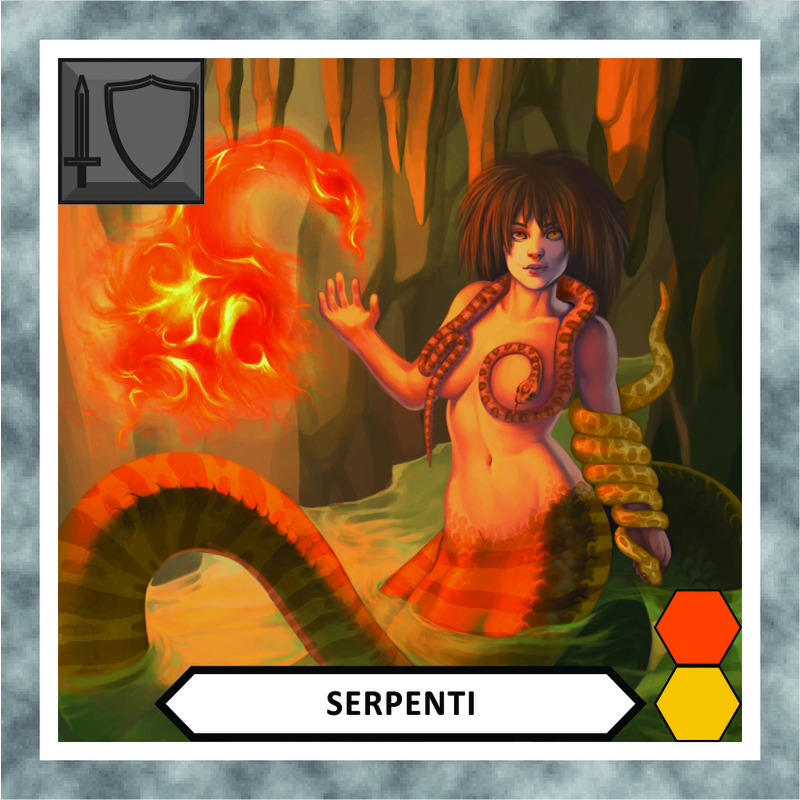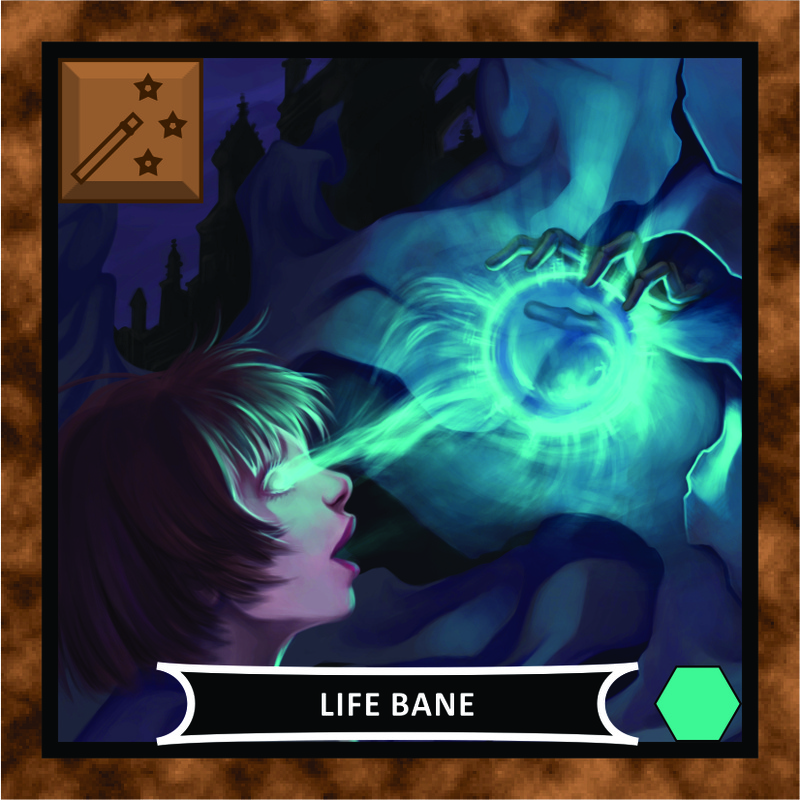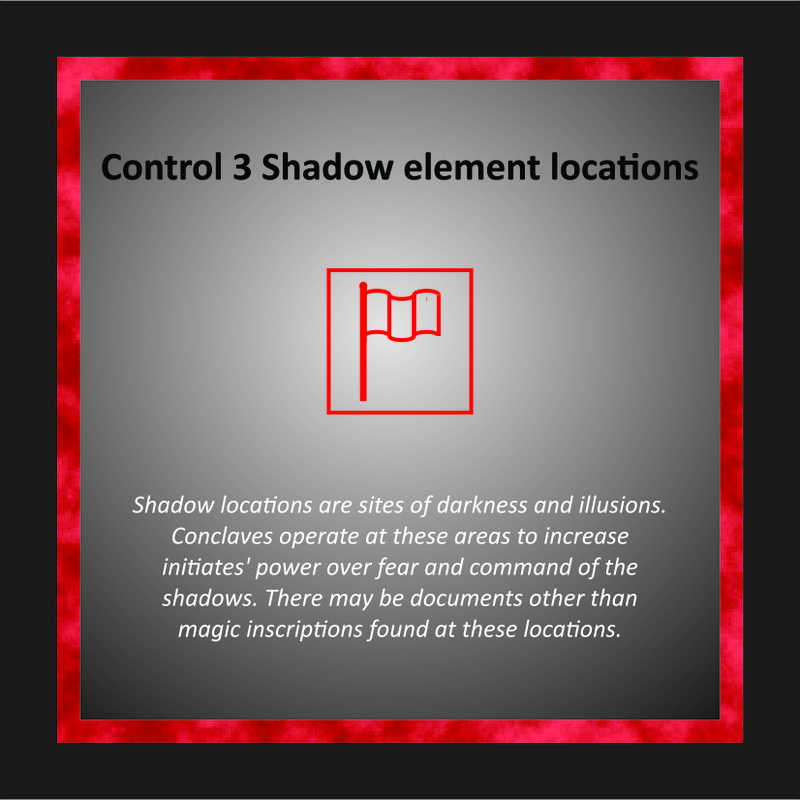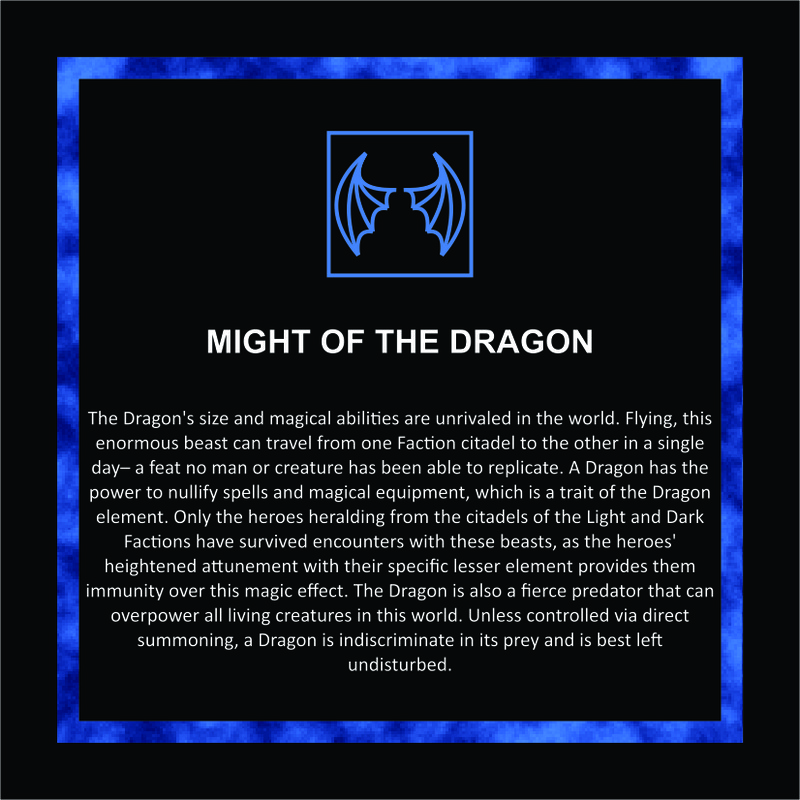RULES OVERVIEW
| elemancers_game_manual_v0.2.pdf | |
| File Size: | 861 kb |
| File Type: | |
ELEMANCERS™ is a 2-player strategy game that takes around 1 hour to play. The standard game setup uses a random 25 tile piece setup as the game board, with the players' citadels at opposite corners, and the Temple of Fate (neutral location no creatures may move to) in the middle of the game board. ELEMANCERS™ utilizes card-based gameplay which includes Creature Cards, Ability Cards, Saga Cards, and Lore Cards. To win the game, a player must capture the enemy Citadel, kill all enemy Heroes, or take their Artifact to the Temple of Fate. Players start the game with 1 Saga Card face down (only owner may view), 3 Morph Cards (special type of Ability Card) facedown, and all of their Creature Cards in their Creature Deck face down (only owner may view the cards). Gameplay is turn-based, and each turn has 4 phases: Fate, Power, Deploy, and Battle.
Fate Phase:
The Fate Phase is all about gaining your Fate for that turn. During this phase the player taking the turn roles 3 Fate Dice (white = Creation, black = Death, Green = Dragon). This determines how much Fate each player gets during that turn (white/black/green flat glass marbles), as Fate resets for both players at the end of each turn. The Light Faction player gets Fate (white marbles) based on the roll of the Creation die, while the Dark Faction player gets Fate (black marbles) based on the Death die. The player that is currently taking the turn also gets Fate from the Dragon die. Fate from your Faction die and the Dragon die both are used separately as currency to perform different actions in a turn.
Power Phase:
The Power Phase is all about gaining power during a turn. During this phase the player taking the turn can spend Dragon Fate on certain actions (if has the Fate to afford it), draws an Ability Card, and may turn in Lore Cards that he has completed a set for to get a super weapon associated with the set.
Deploy Phase:
The Deploy Phase is all about putting Creature Cards into play and moving them on the game board. During this phase the player taking the turn may put any creature the player desires from his Creature Deck into play at his Citadel, and then may move the creature to an unoccupied space. Players are capped at how many creatures they may have in play at once. Creature Cards are also put into play face down, and only the owner of the card may view it. Creature Cards are revealed for the rest of the game once they enter a Battle, use a Trait on the creature, use an Ability Card, or move as a flying unit.
Battle Phase:
This phase is all about doing battle with other creatures. Battles are initiated between creatures that are on adjacent location tiles. Most creatures may only attack vertical/horizontal targets, but flying creatures may attack in any direction. Battles are “all or nothing” in that if a creature has an Effective Creature Level (ECL) higher than the opponent, it wins the battle and the other creature is removed from the game. Both creatures die in a tie. During battles, players may use Ability Cards depending on the creature type, and bonuses obtained from them are determined by the elements on the Creature Card/Ability Card as well as the special requirements that need to be satisfied on the Ability Card. Ability Cards are played facedown one at a time by both players, and are then revealed faceup at the same time. Ability Cards typically increase a creature’s ECL by 0-2 levels per card played. Players may even play Ability Cards that he cannot satisfy any bonuses for, bluffing to get the other player to play certain Ability Cards.
Locations:
The location tiles are evenly divided among the 6 lesser element types (Necro, Shadow, Ice, Celestial, Flame, Beast) with the center tile serving as the Temple of Fate (neutral element -- Dragon). The elemental locations are spread throughout the board space in a random configuration except for the location of the Citadels and Temple of Fate. Citadels are located at Starlight Ridge and the Eye of Hecatross at opposite corners of the game board, while the Temple of Fate is location in the center of the game board. Only Creature Cards and Artifacts may be placed on location tiles.
Creature Cards:
Creature cards are artistic portraits of various creatures which have UI icon overlays and nameplates. Each Creature Card has a nameplate, hexagons on lower right side identifying what elements the creature is as well as its ECL, and a button on upper left which indicates the type of creature. The number of hexagons indicates the ECL of the creature, while the color indicates what elements it is. Each creature “type” has certain Traits unique to that creature which may include type of movement/attack, special power that the creature can use in game, or unique rules only applying to that creature type.
Dragon Cards:
Dragons are currently the only creature type in game which does not start in the player’s Creature Deck, and may only be summoned via turning in the Dragon Set of Lore Cards, or by having 2 Progenitor type creatures battle each other – as they will fuse to become a Dragon. The Dragon is the most powerful creature in the game with a starting ECL of 5, and can only be killed by Heroes or another Dragon. This creature can fly and attack any creature practically anywhere on the game board, making it a great weapon for sniping weaker targets or stealing critical locations to satisfy a Saga Card or to capture a Citadel.
Ability Cards:
Ability Cards have a card setup similar to that of Creature Cards, with an artistic portrait, element hexagons, ability type button, and nameplate. Only certain creatures in the game can satisfy particular Ability Cards. There are 5 types of Ability Cards: Magic, Invocation, Weapon, Armor, and Morph. Ability Cards, regardless if can satisfy the benefits of the card or not, cost Fate from the Primal Fate dice to play.
Morph Cards:
Morph Cards are Ability Cards which allow the player to turn one creature into another during a Battle or during the Deploy phase. Each Morph Card is set up like an Ability Card, but the hexagon element it displays is the element it allows you to manipulate on a creature. A player may take away or add that element to turn into another creature he owns that is not removed from the game that shares that new element combination. For example, using a Morph Card that has a Necro element, you may have a Skeleton (1 Necro, 1 Shadow) turn into either a Lich (2 Necro, 1 Shadow) or a Shadowmancer (1 Shadow). This type of Ability Card allows a player to respond tactically to a Battle situation, or to put the new creature type on an advantageous position on the game board.
Artifact Cards:
Artifacts are unlocked for use in game after turning in the Artifact Set of Lore Cards. Artifacts are placed at the owner’s Citadel once unlocked. A Hero or Elemancer may then occupy the site to pick up the Artifact (placed on top of the creature). If the creature holding the Artifact then moves to the Temple of Fate, that player wins the game. However, if an enemy creature occupies the same location as the Artifact, the enemy wins the game.
Saga Cards:
Saga Cards are objectives which are not seen by the opposing player. These are either feats in Battle or certain locations you must occupy in order to satisfy the card. When a Saga Card is completed, that player may immediately draw another Saga Card, as well as a Lore Card. The faster a player acquires Lore Cards, the faster the player will complete one of the two Sets which unlock a superweapon that will turn the tide of war in your favor. All players share the same Saga Card Deck, with every Saga Card having a unique secret objective.
Lore Cards:
Lore Cards currently provide 2 superweapons that may be unlocked: the Dragon and your Faction’s Artifact – either the Feather of Light or Heart of Darkness. Both players have their own Lore Card Decks, and regardless if another player has unlocked a superweapon, any player can still work toward theirs as well.
Reference Sheets:
Both players have Reference Sheets between them and the game board. This provides the player with all important reference information including but not limited to the following: creature type information, ability type information, morphing evolution tree, icon and element descriptions, and all Fate costs. This allows players to easily obtain information about the game/cards without having to display this same information on the cards directly, which prevents having to pick up cards to read them, having to open the rulebook during play, as well as allowing maximum space for each artistic portrait on the cards.




